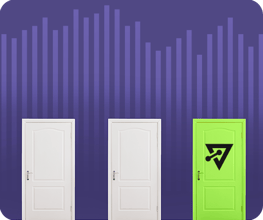
CPG Data Analytics: The Life Force of Consumer Brands
When it comes to consumer packaged goods (CPG) companies, the sustained growth of their bottom line hinges on being able to stay one step ahead of the competition, effectively manage supply chain disruptions, and respond appropriately to shifts in consumer behavior and market conditions.
And it’s no secret that the retail industry can change rapidly and frequently, whether that’s a result of predictable events or unforeseen circumstances. How, then, can a CPG put itself in position to consistently meet consumer demand, ensure the right products are available in the right markets or online, and accurately measure the success of their products and promotions?
The answer: CPG data analytics.
Data analytics for CPG brands is not just “another tool” or a bunch of numbers—it’s the life force that helps determine how successful (or unsuccessful) a business and its product lines can be.
High-performing CPGs take a data-driven approach to their businesses and make data the foundation of their overall business strategy, as well as their field execution. Having the means to harness, decipher, and leverage large amounts of disparate data to identify insights, patterns, and trends, leads to highly informed business decisions that increase productivity, efficiency, sales, and profitability.
Here, we take you through what you need to know about using CPG data analytics, including what it is, who should use it, how you can use it, and its common pain points.
What is CPG Data Analytics?
CPG data analytics involves the collection, processing, reporting, and analysis of various types of data about a supplier’s products, retailer partners, consumers, and sales and marketing activities executed in the market and/or on e-commerce platforms.
Employing timely, accurate analytics, CPG brands can turn critical data into useful insights and make more-informed decisions that help them:
- Spot consumer and/or market trends and patterns
- Better understand consumer behavior and product performance
- Optimize new product launches and product development
- Ensure effective marketing campaigns and trade promotions
- Improve supply chain and overall operational efficiency
- Reduce sales, marketing, and supply chain costs
- Increase revenue and maximize ROI
- Stay competitive in a dynamic market
CPG data analytics relies on a combination of data from multiple internal and external sources:
Retailer Data (brick-and-mortar/e-commerce)
Data from retailers includes point-of-sale (POS) data (i.e., scan data) collected at the store location but also from online sales and through mobile applications. For physical stores, sales data simply gives you an idea of how much product was sold at an individual store during a certain time frame.
This retail data is crucial for understanding product performance in the market; which stores are underperforming or selling the most products; and which sales, marketing, and promotional activities are most effective. Retailer data can also include information about inventory, orders, and forecasts that are useful to the CPG.
Distributor Data
This includes details about shipments from a distributor to a retailer; however, it does not include POS data or sell-through data. Information from a distributor may also include inventory-related data for distribution centers that can help you understand how much product goes to individual retailers and where it is eventually sold.
Internal/Enterprise Data
This is data generated, collected, and maintained by the CPG company itself, and the various teams within the organization’s data ecosystem. The data may include master data, forecasts, and shipments, as well as supply chain, financial, and promotional data.
Third-party and Syndicated Data
This includes data and research collected and aggregated by independent organizations, market research companies, and/or data providers. It can include sales data of other CPG companies/products, competitive comparisons, demographics, weather data, and more.
How BRANDS Use CPG Data Analytics
CPGs rely on accurate retail data to drive sales and revenue and to inform and elevate their marketing, trade promotions, operations, and overarching business strategies. Here are some of the various ways through which CPG brands utilize CPG data:
- Market Research: CPG brands use data to conduct in-depth market research, gaining insights into consumer preferences, behaviors, and trends. This knowledge helps them spot fresh opportunities, gauge market demand, and adjust product offerings accordingly.
- Product Development: Data analytics plays a pivotal role in shaping new products and enhancing existing ones. By scrutinizing market data and consumer feedback, brands can develop products that closely align with consumer needs and desires.
- Inventory Management: Data-driven insights are essential for optimizing inventory levels, ensuring products are available precisely where and when consumers seek them. This minimizes and can prevent excess stock or product shortages.
- Supply Chain Optimization: Data is instrumental in streamlining supply chain operations, leading to transportation cost reductions, improved distribution, and enhanced efficiency. This may involve route optimization, demand planning and forecasting, and inventory control.
- Promotions and Pricing: Brands turn to reliable retail data to create and measure the impact of promotional campaigns and pricing strategies. Understanding which promotions drive sales allows for fine-tuning pricing to maintain competitiveness.
- Consumer Segmentation: Data enables brands to segment their customer base according to various criteria such as demographics, behavior, and purchase history. This segmentation serves as the foundation for highly targeted marketing initiatives and personalized messaging.
- Channel Optimization: CPG companies can use data to determine the most effective sales channels, whether through traditional retail, e-commerce, or a combination of both. The performance of different channels is rigorously evaluated, paving the way for data-driven decisions.
- Brand Loyalty and Customer Retention: Data aids in tracking customer loyalty and engagement, facilitating the creation of loyalty programs, personalized recommendations, and incentives to retain valued customers.
- Quality Control and Compliance: For maintaining product quality and adhering to regulatory standards, CPG brands rely on data. Data analytics is a powerful tool for the early detection and prompt resolution of quality issues.
- Competitive Analysis: Brands analyze data to vigilantly monitor competitor activity, assess market share, and pivot strategies in response to shifts in the competitive landscape.
- Digital Marketing: Data is the linchpin of digital marketing optimization. Brands scrutinize online consumer behavior and campaign performance to refine their online advertising, social media, and e-commerce strategies.
- Sustainability Initiatives: CPG brands use data to measure and reduce their environmental impact. This allows brands to respond to the increasing consumer demand for sustainable products and packaging.
In the contemporary landscape, finding the solutions and processes to efficiently gather, process, analyze, and leverage timely and comprehensive demand and supply data is no longer optional for CPG brands. Confident, data-driven decision-making is the key to remaining competitive, agile, and responsive in this fast-moving market.
Who Uses CPG Data Analytics?
Why limit the power of CPG data to serving only one or two departments when it can empower an entire company? CPG data analytics can be beneficial to a wide range of stakeholders across a company, as well as to retailer partners. CPG data analytics is a cross-functional tool that helps inform strategic decisions, optimize operations, and enhance the consumer experience.
Here are some key business areas and roles that regularly—or should regularly—leverage CPG data and analytics:
- Sales: CPG data analytics greatly assists sales teams by offering insights for more accurate sales forecasting, efficient customer segmentation, optimized inventory management, product performance analysis, pricing strategies, trade promotion evaluation, and market expansion opportunities. By analyzing data, sales teams can tailor their strategies, set competitive prices, and make informed decisions on inventory levels, ultimately enhancing their ability to boost sales, minimize costs, and stay competitive in the market.
- Marketing: CPG data analytics empowers marketing teams and brand managers by enabling precise customer targeting, personalized campaigns, and real-time performance assessment. This results in more effective marketing strategies, improved customer engagement, and better ROI on marketing investments.
- Supply Chains: CPG data analytics enhances supply chain efficiency by providing insights into demand forecasting, inventory management, and logistics optimization. It enables data-driven decisions that reduce costs, streamline processes, and ensure products are readily available when needed, ultimately improving supply chain operations.
- Information Technology: CPG data analytics aids IT teams in maintaining robust data infrastructure, security, and data management systems. This support ensures that data is stored, processed, and transmitted securely, enabling the smooth operation of data analytics initiatives within the organization while safeguarding against data breaches and technical issues.
- Data and Business Analysts: Accurate retail data provides analysts with valuable insights and facilitates predictive models that support informed decision-making for numerous departments, including sales, marketing, and finance.
- Retailers: Retailers, whether they sell product in brick-and-mortar stores or online, use data analytics to make decisions about inventory management, store layout, pricing, promotions, and more. They also analyze consumer data to improve the overall shopping experience.
- Finance and Budgeting Teams: Data analytics is critical for financial planning, budgeting, and cost analysis, helping CPG companies make informed financial decisions that can dramatically affect profitability.
CPG Data Analytics Challenges
It’s easy to see how using CPG data analytics based on the most reliable supply and demand data can positively impact decision-making across a CPG. But it also comes with several challenges that CPGs and their retailer partners must address:
- Data Quality: Ensuring the accuracy and reliability of data from multiple retail sources is a constant challenge and can be complex. Inaccurate or incomplete data can lead to incorrect insights and decisions.
- Data Integration: Many CPG companies have data residing in numerous silos, making it challenging to integrate and analyze the data effectively. Because of this, data integration efforts can be time-consuming and costly.
- Real-Time Analytics: In a fast-paced industry, there is a growing need for real-time retail data analytics to respond to changing consumer behavior and market conditions. Implementing real-time analytics infrastructure can be technically challenging.
- Complex Consumer Behavior: Consumer behavior can be influenced by a multitude of factors, making it challenging to predict and understand. Data analytics should be able to account for this complexity.
- Cost of Technology: Implementing and maintaining data analytics technology internally can be expensive and consume valuable IT resources. This includes software, hardware, and the cost of training employees.
- Data Privacy and Security: Consumers are increasingly concerned about the use of their data, and brands must be careful in how they collect, store, and use data while respecting privacy regulations. Privacy regulations are becoming more stringent, and protecting this data from breaches and complying with privacy laws is a significant challenge.
- Data Silos: Overcoming data and departmental silos and promoting cross-functional collaboration is essential for a holistic view of your business and making mutually beneficial decisions between departments and with retailers.
- Data Interpretation: Gathering data is one thing; interpreting it correctly and deriving actionable insights is another. CPG companies need skilled analysts who can make sense of the data and turn it into strategies and decisions.
- Seasonal Variations: Managing seasonal demand fluctuations to optimize production and distribution can be a continuous hurdle.
- Scalability: As a business grows, its data analytics need to grow as well. Scalability can be a challenge, both in terms of technology and the workforce.
- Competitive Intelligence: Gathering data on competitors, especially from external sources, can be demanding.
To address and overcome these challenges, CPG companies should invest in advanced data collection, data harmonization, and analytics tools; hire or train data experts; and establish robust data governance and quality assurance processes. Additionally, collaboration with external partners, such as data vendors and consultants, can help address some of these challenges.
How VELOCITY® CAN Help YOU
It’s undeniable that there is an incredible amount of value—both short and long term—in using CPG data analytics as the cornerstone to your company’s business strategy, whether your business is large or small. More-informed business decisions based on data and insights you can trust provide companies with the ability to adapt, evolve, and realize the greatest return on their investments.
The key, however, is making sure you can quickly and easily gather and process the data you need to garner meaningful and useful insights. That’s where Retail Velocity comes in.
Retail Velocity’s cloud-based retail data platform, VELOCITY®, automatically ingests, cleanses, and harmonizes your data from any retail data source, regardless of the data delivery method or format. By leveraging the most accurate daily item- and store-level supply and demand data, brands can confidently make the critical decisions to achieve peak performance and keep them ahead of the curve and ahead of the pack.
If you're ready to embrace and unleash the power of reliable data and data analytics—and the profitable path they can lead you on—contact us today.



